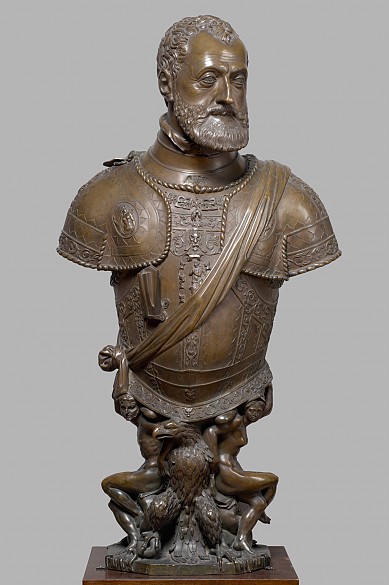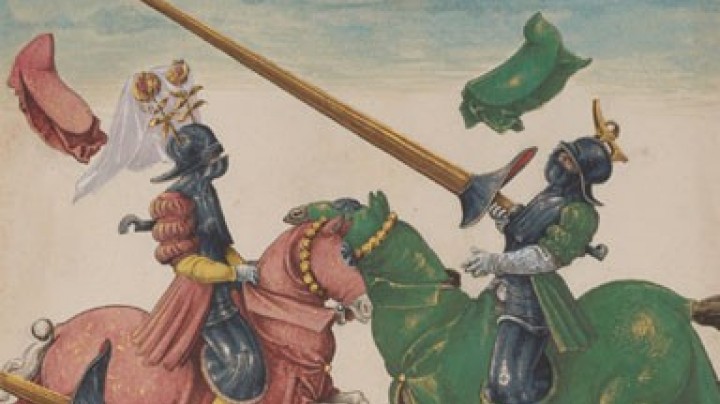Charles V: the empire on which the sun never set
In the person of Charles, the Habsburgs attained the status of a Great Power for the first time. Extending over several continents, his dominions were referred to by contemporaries as the empire ‘on which the sun never set’.
The basis of his power was Spain: uniting in his person for the first time the crowns of Castile, Navarra and Aragón, Charles was the first king of Spain as a unified whole. His dominions also included the kingdoms of Naples, Sicily and Sardinia together with the Low Countries as part of the Burgundian inheritance.
Charles is also associated with the beginnings of the Spanish colonial empire in South and Central America. During his rule the destruction of the ancient American civilizations together with the exploitation and enslavement of indigenous peoples reached its zenith. The orders that Charles issued to the conquistadors and missionaries from his distant throne in Europe that enjoined them to protect the native population and to convert them to Christianity using convincing arguments rather than force remained – given the brutal reality – nothing more than half-hearted attempts to provide moral justification for the Spanish conquest of the Americas.
For a short time Austria too belonged to Charles’s global empire. On the death of his grandfather Maximilian I in 1519 Charles had inherited the Austrian patrimonial lands. However, in 1521/22 he transferred his dominion over these Central European dynastic territories to his younger brother Ferdinand, the founder of the Austrian line of the Habsburgs.
The division of the lineage was undertaken to secure the hereditary succession. Since in the preceding generations there had only ever been one surviving male successor, there was always a constant risk that the dynasty would die out and the empire that had been accumulated with such effort would collapse. Efforts to cement the succession on both sides led to marriages between the two lines in each generation. From a genealogical perspective the two branches of the dynasty constituted a single family entity.
Within the dynasty Charles held the position of head of the family, and his siblings were bound to obey him. His brother Ferdinand was for a long time overshadowed by Charles and was slow to develop an independent profile of his own as a ruler. Later on he sometimes found himself opposing his powerful brother.
The women in the family were equally subordinate to the demands of imperial politics. Charles’s sisters and daughters played an important role as pawns of his marriage policies but also exercised political functions as governors, for example Charles’s sister Maria, who represented Habsburg interests in the Netherlands with great skill.














